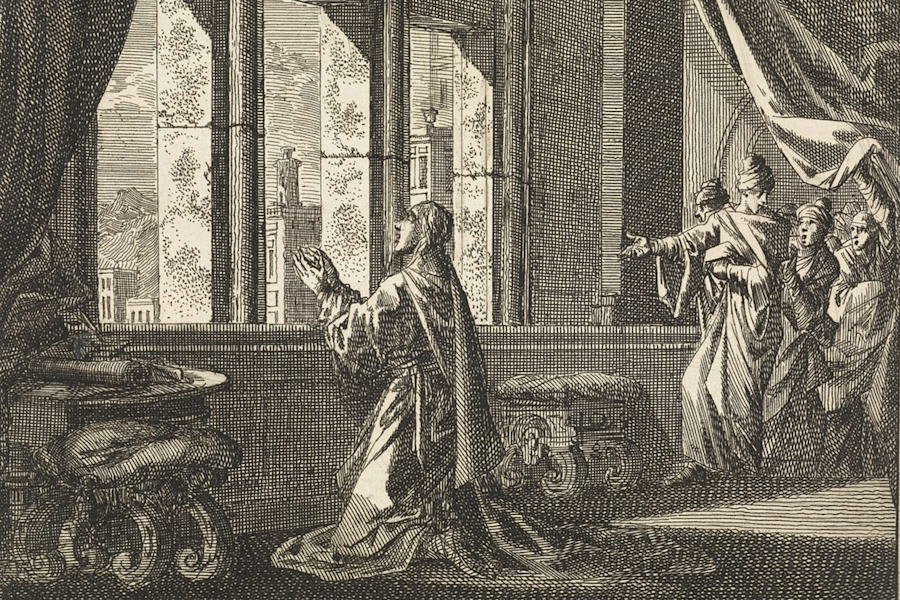Purpose
To set moments of refocusing the heart and mind on the Lord throughout the day. To specifically structure the flow of our days around rhythmic and anticipated connection with the Lord.
Go Deeper
Throughout history, people of prayer have discovered that the practice of returning regularly to a prayer ritual or pattern has a powerful impact on the one who prays. For some, this has involved praying at set hours of the day, while for others this has looked like praying at certain intervals rather than each hour. Today’s practice is usually based on set prayers, liturgy, or Scriptures. Creating a rhythm or flow to our schedule that is oriented around intimacy with the Lord or theological principles that renew the mind is powerful.
These prayers draw our attention back to the Lord. They help us have the words to communicate to him specific requests and longings and give us perspectives we may not have otherwise had. For example, in our evening prayers before bed, Jeremy and I weren’t accustomed to asking God to be with “All who are sleeping in this dwelling.” But practicing this prayer helped our minds, hearts, and spirits fall asleep better, knowing the embrace of the Lord. Daniel 6:10 – 28 is an excellent example of a daily rhythm of seeking the Lord.
Daniel was so accustomed to intimacy with God that he was willing to risk his life to continue walking in his devotion.
Missional Spirituality
To pause and regain a spiritual perspective three times a day enables us to keep perspective on what we are doing and whom we are called to serve and love. It also allows our day to be structured by prayer rather than whatever our schedule may try to make us prioritize.
We did these prayers daily through the 2020 pandemic, and it was an incredibly enriching practice. Even in the midst of fear-inducing events, such as the urban violence that escalated in Richmond, these prayers reminded us every day that we belong to only one King and one kingdom. As we look back on that time, we believe our deeper rootedness in Christ gave us a greater capacity to love our neighbors, love our city, and care for others.
Sure, we didn’t do everything right (who did in 2020?), but we are grateful for a year of walking in deeper intimacy with the Lord than we ever had before and being able to walk alongside him in his mission in a more loving way. Despite all the intense hardship we faced during the pandemic, praying the hours helped us to know that God was walking with us through it all.
Monica and I have also practiced these prayer rituals communally.1 When we’ve been part of missional communities that chose to corporately do one of the morning, midday, or evening prayers, it became a life-changing rhythm for all those involved. It elevated the quality of each day and unified us as we continued on mission together.
Savor the Beauty
As Jeremy and I lived in this rhythm of daily prayer, we noticed there were times when stressful events would lead us to pause and recite a prayer or reflect on the truth of one of those prayers. When dealing with difficult people or situations we would take a breath and internally pray a line from one of the daily prayers. By regularly reminding ourselves of these truths and leaning into God’s presence, his beauty became the overarching reality for us. We faced a unique set of trials during 2020 that could have easily caused our year to be devastating (including the death of Jeremy’s dad, to whom Jeremy was particularly close). Yet the year was defined by walking closely with God through all the pain and suffering. To experience joy in the midst of so much difficulty is a testament to the supernatural work of God in our lives.2
Practice
Stop and pray at set intervals during your day. You can choose to do this several times on the hour, or at specific times, such as morning, noon, and night. Consider using some written prayers or set Scriptures. You may want to use the Celtic prayers of the Northumbria Community.3 They have morning, midday, and evening prayers that are theologically rich and trinitarian.4 Or you can create your own prayers specific for different parts of the day, either in your own words or using certain Scriptures. (See some recommended passages in the key resources below.) You may also want to use the Book of Common Prayer the Anglican and Episcopal church use.5 After you have practiced praying the hours, consider setting aside a specific day of your week when you pray the hours at more frequent intervals. If you are part of a larger household or community, could you incorporate this practice into your rhythm together? The 24 – 7 Prayer movement has devotional apps for adults and families (Lectio 365 and Lectio for Families — see the Key Resources section at the end of this practice) that incorporate set prayers and reflections. You might even be able to bring this practice into your workplace.
Key Resources
- Psalm 27.
- You could use Psalm 143 for the morning, Psalm 90 for noon, and Psalm 63 for the night.
- Ffald y Brenin, a Welsh prayer movement has a variety of resources: https://ffald-y-brenin.org/prayer#daily-readings.
- Northumbria Community’s website: https://www.northumbriacommunity.org/offices/morning-prayer/
- Northumbria Community, Celtic Daily Prayer: Prayers and Readings from the Northumbria Community (HarperOne, 2002).
- The Episcopal Church, The Book of Common Prayer (Good Books, 2016). Also see https://www.churchofengland.org/sites/ default/files/2019 – 10/the-book-of-common-prayer-1662.pdf.
- The Moravian daily texts are also scriptural passages and prayers that help you to engage with regular intervals of prayer throughout the day. They have been doing this for hundreds of years! https://www.moravian.org/daily-prayers-formoravians/.
- 24 – 7 Prayer’s Lectio365, https://www.24 – 7prayer.com/resource/lectio-365/.
- 24 – 7 Prayer’s Lectio for Families, https://www.24 – 7prayer.com/resource/lectioforfamilies/.
- We’ve included information here about the Northumbria Community and their daily prayers, which are extremely helpful. In their broader literature, they have some occasionally theologically eccentric points, but in their daily prayers they are trinitarian, insightful, filled with Scripture, and focused on walking with God through every detail of their day. ↩︎
- Timothy Keller has an excellent book about trials that addresses how we can have an appropriate perspective when we’re going through difficulty. See Timothy Keller, Walking with God through Pain and Suffering (Hodder & Stoughton, 2013). ↩︎
- https://www.northumbriacommunity.org/offices/morning-prayer/. ↩︎
- You may also want to get the Celtic Daily Prayer: Prayers and Readings from the Northumbria Community (HarperOne, 2002). ↩︎
- https://www.churchofengland.org/sites/default/files/2019 – 10/the-book-of-common-prayer-1662.pdf. ↩︎
Taken from The Art of Missional Spirituality: 31 Sacred Practices for Jesus Followers by Jeremy and Monica Chambers. Copyright © 2023 by Jeremy Chambers and Monica Paredes Chambers. 100 Movements Publishing, 2023. https://www.jemochambers.com/
Image: Jan Luyken, 1712, Daniel, while praying on his knees before an open window, is discovered by the conspirators, Rijksmuseum (public domain).
Text First Published November 2023 · Last Featured on Renovare.org December 2023


